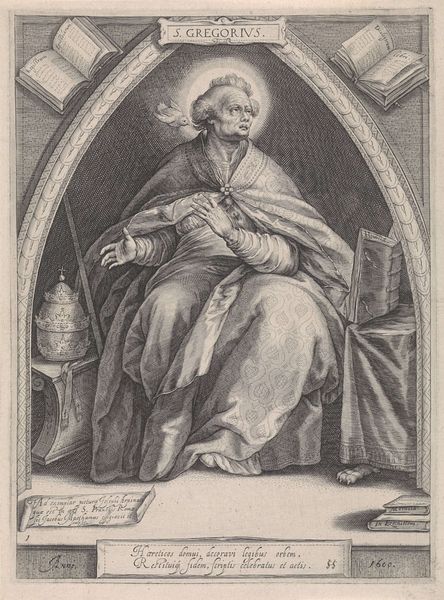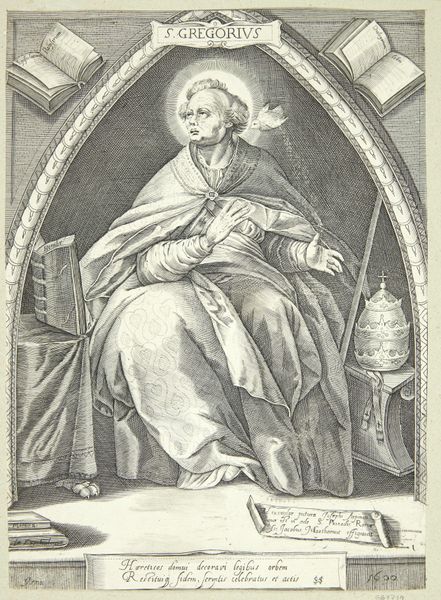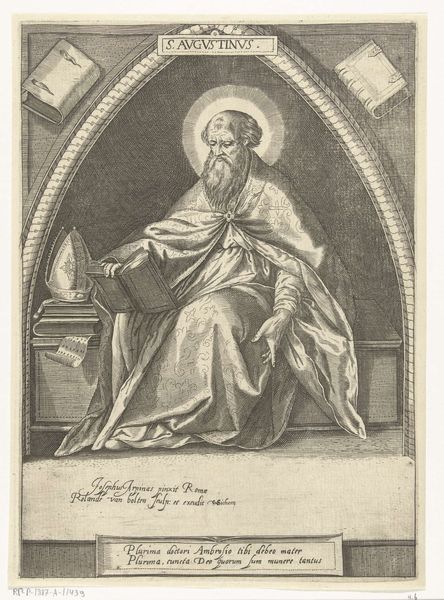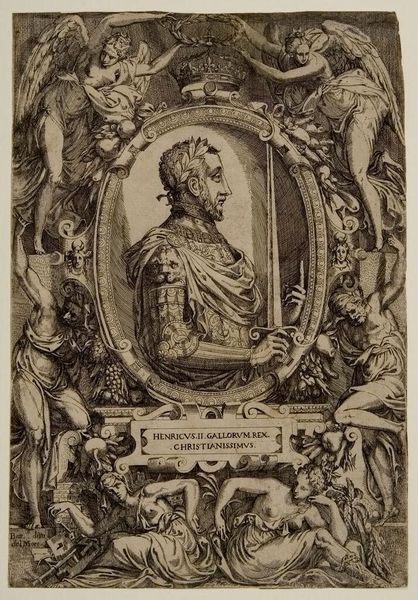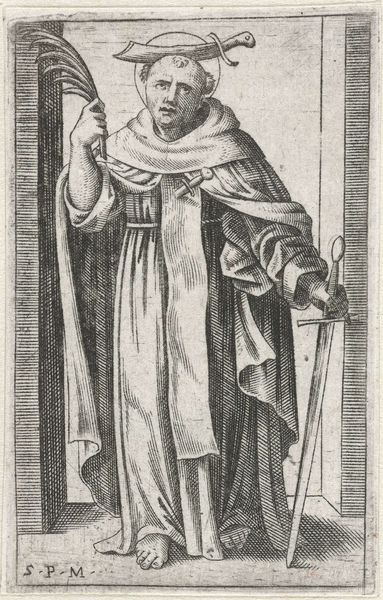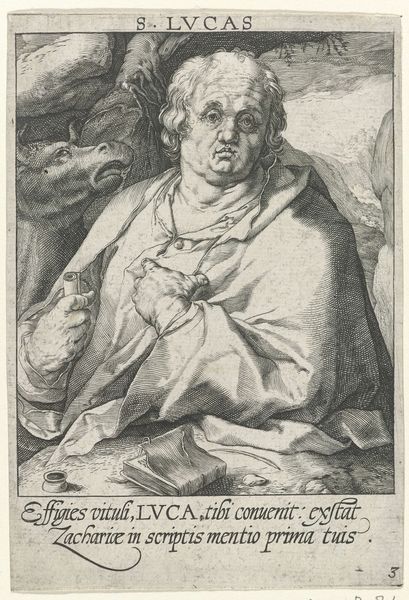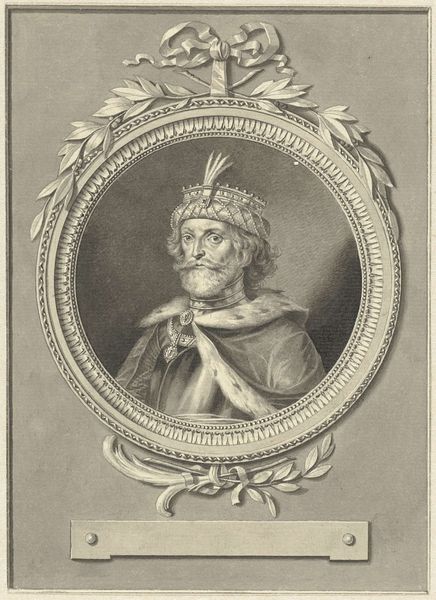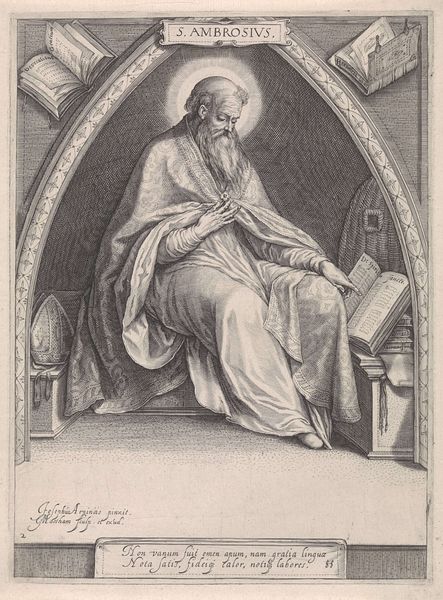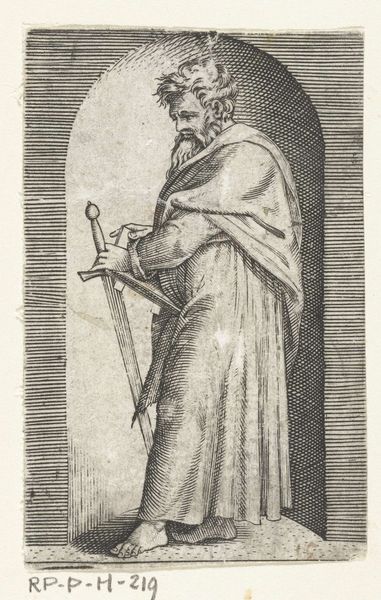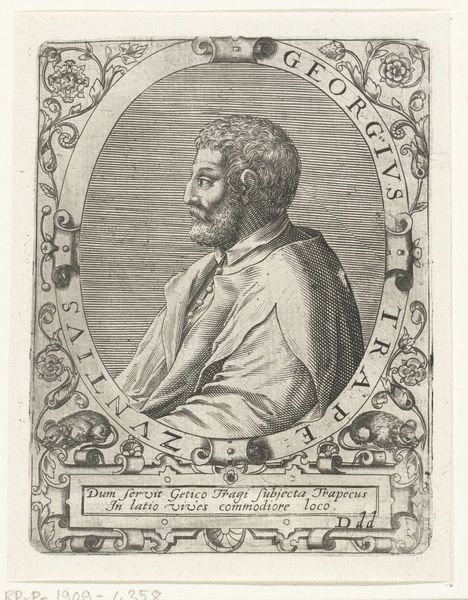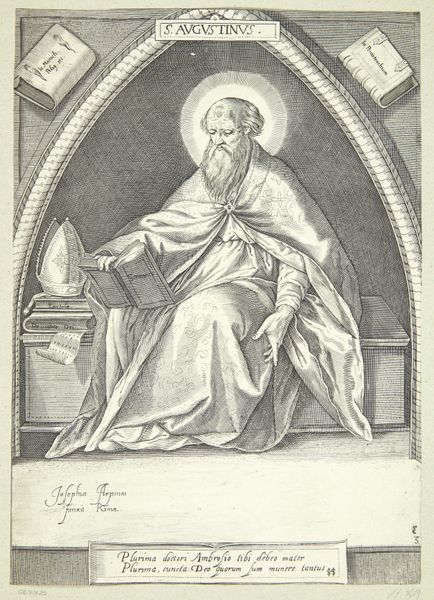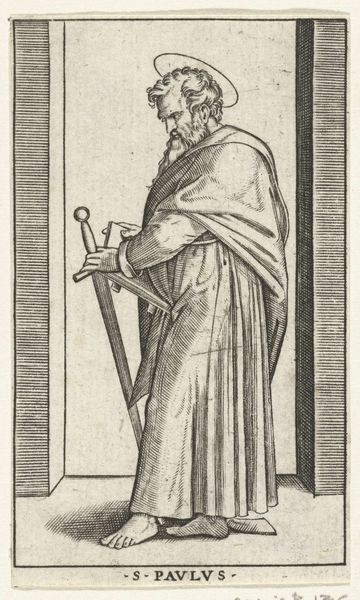
print, engraving
#
portrait
#
baroque
# print
#
old engraving style
#
figuration
#
line
#
portrait drawing
#
history-painting
#
engraving
Dimensions: height 291 mm, width 210 mm
Copyright: Rijks Museum: Open Domain
Roeland van Bolten made this engraving of Kerkvader Gregorius. Engraving is an indirect process. The artist begins by gouging lines into a metal plate, typically copper, using a tool called a burin. These lines are then filled with ink, and the plate is pressed against a sheet of paper, transferring the image. Look closely, and you’ll notice the lines are not uniform, but have tiny swellings and tapers. Skilled engravers modulated the pressure of their tool to achieve this effect, giving the finished print a subtle sense of depth and dynamism. Van Bolten also used hatching - closely spaced parallel lines - to build up areas of shadow. The density of these lines determines the darkness of the tone, a testament to the engraver's skill and eye. Engravings like this, were a way of disseminating images widely. This speaks to a time when the mass production of images began to transform culture and communication. The craft involved required technical skill and a deep understanding of materials. This piece is a reminder that even seemingly reproducible images are often rooted in intensive manual labor.
Comments
No comments
Be the first to comment and join the conversation on the ultimate creative platform.
